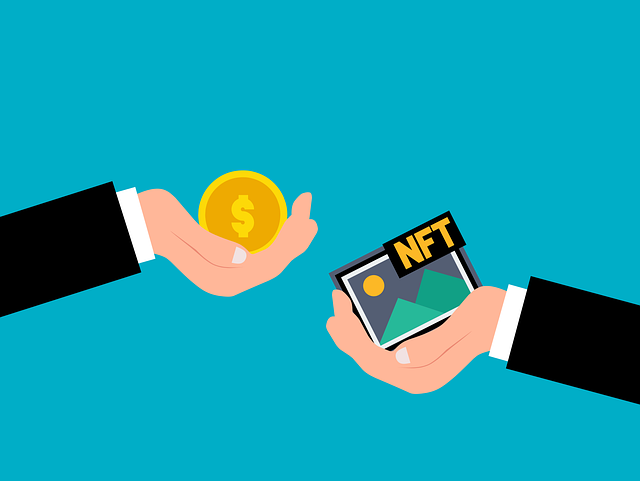Blockchain Sell Fee 2025: Complete Guide
Author: Jameson Richman Expert
Published On: 2025-10-23
Prepared by Jameson Richman and our team of experts with over a decade of experience in cryptocurrency and digital asset analysis. Learn more about us.
Blockchain sell fee has become a critical consideration for traders, investors, and creators in 2025 as network upgrades, layer-2 solutions, and changing exchange fee models reshape costs. This article explains what a blockchain sell fee is, how it’s calculated across different platforms (CEX, DEX, and NFT marketplaces), practical examples, fee-optimization strategies, tax implications, and tools you can use to estimate and reduce costs. Read on for actionable tips and resources to control your costs when selling crypto or tokens.

What is a “blockchain sell fee”?
At its core, a blockchain sell fee refers to any cost incurred when liquidating a crypto asset—whether that sale occurs on a centralized exchange, a decentralized exchange (DEX), or an NFT marketplace. The fee can be one or more of the following:
- Network fees (gas): Paid to miners/validators to process the transaction on-chain (e.g., Ethereum gas).
- Exchange fees: Charged by the platform executing the trade (maker/taker, percentage-based, or fixed).
- Marketplace/Platform fees: Fees retained by NFT marketplaces or specialized platforms (e.g., marketplace commission).
- Slippage and liquidity costs: The effective cost experienced when your limit or market order executes at a worse price due to low liquidity.
Understanding each component helps you estimate the total cost of selling and take steps to minimize it.
Why blockchain sell fees matter in 2025
Fee structures have evolved: layer-2 solutions and alternative blockchains provide lower network fees, while centralized exchanges offer discounted fees for volume or token-staked programs. However, rising adoption and more complex DeFi interactions (token approvals, multi-hop swaps) mean the effective sell cost can still surprise sellers. Being fee-aware improves trading profitability, NFT sales net revenue, and overall capital efficiency.
Types of fees that make up a blockchain sell fee
Network (Gas) Fees
Network fees compensate validators/miners to include transactions in blocks. On Ethereum, this is commonly called “gas.” Gas costs vary by network congestion, transaction complexity (simple transfer vs. smart contract swap), and protocol upgrades. For general information about gas and Ethereum, see the official Ethereum documentation at the Ethereum website.
Exchange Trading Fees
Centralized exchanges (CEXs) charge trading fees—often a maker/taker model expressed as a percentage of trade value. High-volume traders can qualify for lower tiers, and exchanges often provide discounts when paying fees in their native token. Examples: Binance, MEXC, Bitget, and Bybit all have tiered fee structures and referral programs.
Withdrawal and Conversion Fees
When moving funds off an exchange or converting between tokens, withdrawal fees or on-chain conversion costs add to the sell cost. Some exchanges subsidize withdrawals at times, or use off-chain mechanisms to reduce fees for common pairings.
Marketplace Commissions
NFT platforms and other marketplaces often take a commission (e.g., 2.5%–15%) on sales. Royalty settings in smart contracts can further reduce seller revenue when NFTs transfer across marketplaces that honor royalties.
Slippage and Liquidity Costs
Executing large market sells across thin order books or low-liquidity DEX pools increases slippage—the difference between expected and executed price—effectively raising your sell cost.

How blockchain sell fee is calculated — formulas & examples
Below are practical formulas you can use to estimate total sell cost.
Basic formula
Total Sell Cost = Network Fees + Exchange/Marketplace Fees + Slippage Cost + Withdrawal/Conversion Fees
Example 1 — Centralized Exchange (CEX) sell
- Asset sold: 1 BTC at $60,000
- Exchange taker fee: 0.10% (taker)
- Withdrawal fee: 0.0005 BTC
- Network fee to withdraw (if on-chain): 0.0005 BTC × $60,000 = $30
Trading fee = 0.10% × $60,000 = $60
Withdrawal fee (in USD) ≈ $30
Total Sell Cost ≈ $90 (not including slippage)
Example 2 — DEX swap on Ethereum (ERC-20)
- Swap token A for USDC via Uniswap-style AMM
- On-chain gas for approval + swap: 0.002 ETH (example) at ETH = $3,000 → gas = $6
- Protocol fee or swap fee: 0.30% of trade value
- Slippage: 0.5%
For a $10,000 trade:
Swap fee = 0.30% × $10,000 = $30
Slippage cost = 0.5% × $10,000 = $50
Network gas = $6
Total Sell Cost ≈ $86
Note: Gas varies widely. For dynamic gas tracking, use tools like Etherscan’s gas tracker and Ethereum documentation on gas mechanics.
Platform-specific behaviors: CEX vs DEX vs NFT marketplace
Centralized Exchanges (CEX)
CEXs execute off-chain matching and post aggregated moves on-chain for custody networks, which reduces network fees for traders who keep funds on the exchange. Fees include maker/taker trading fees, deposit/withdrawal fees, and often margin/derivatives-specific costs. CEXs may offer maker rebates or discounts using native tokens.
Consider these exchanges if you're focused on low trading fees or liquidity; you can sign up via these referral links for potential bonuses:
Decentralized Exchanges (DEX)
DEX trades occur on-chain and incur gas for approvals & swaps. Some DEXs operate on lower-fee chains (BSC, Avalanche, Optimism) or layer-2s (Arbitrum, Optimism) which significantly reduce gas costs. Automated market makers (AMMs) charge swap fees (often 0.05%–1%), and impermanent loss can affect liquidity providers but not direct sellers.
NFT marketplaces
NFT sales usually involve marketplace fees plus blockchain transaction costs. Marketplaces such as OpenSea or specialized platforms may honor creator royalties. When planning an NFT sale, account for the platform commission (often 2.5%–10%) and on-chain gas for listing, minting, and transfer.
Examples by chain: how fees differ
Ethereum Mainnet
Ethereum typically costs the most on average for complex smart contract interactions. Gas spikes during congestion. The introduction of scaling solutions (EIP upgrades, rollups) has reduced costs for many users, but complex multi-hop swaps and approvals remain relatively expensive. For technical details see Ethereum’s gas documentation.
Bitcoin
Bitcoin fees are based on transaction size (bytes) and mempool congestion. For regular BTC sells via a CEX, users generally avoid on-chain fees unless withdrawing to an external wallet. For developer-level details, see Bitcoin developer reference on transaction fees.
Layer-2s and alternative chains
Chains like Binance Smart Chain (BSC), Avalanche, Solana, and rollups like Arbitrum/Optimism offer much lower network fees for swaps and transfers. However, bridging assets between chains can introduce additional costs and risk. Always evaluate liquidity and bridge fees when using these networks.

Practical strategies to reduce blockchain sell fees
1. Use limit orders instead of market orders
On centralized exchanges, placing limit orders avoids taker fees (often higher) and can result in better execution prices, reducing slippage.
2. Choose lower-fee chains or layer-2s
When selling tokens that exist on multiple chains, move them to a lower-fee network (if bridging cost is justified) to save on transaction costs.
3. Batch transactions and optimize approvals
Avoid repeated token approvals and batch multiple operations where possible to reduce per-action gas overhead. Some wallet interfaces and smart contracts support batch calls.
4. Schedule transactions during low congestion
Gas prices fluctuate. Use gas trackers to send transactions during quieter times or lower priority gas tiers if timing allows.
5. Use DEX aggregators and limit swap slippage
Aggregators (1inch, Paraswap) find optimal routes and reduce slippage. Always set realistic slippage tolerances when swapping large amounts to avoid front-running and sandwich attacks.
6. Take advantage of exchange discounts and rebates
Use exchange native tokens for fee discounts, climb fee tiers with volume, or use referral links for sign-up incentives. Consider the exchanges listed above for fee-structure benefits.
7. Use demo accounts and bots to test strategies
Before risking real capital, test trading strategies in demo or practice accounts to understand fees and execution behavior. Learn whether exchanges offer demo or testnet environments—see this in-depth look at demo account options on Binance to learn what practice trading options exist.
If you want to automate fee-sensitive strategies, read an in-depth review of AI-powered trading bots to see how bots like ABROX can manage timing and order types to reduce effective sell costs.
Tools to monitor and estimate blockchain sell fees
- Ethereum gas trackers: Etherscan gas tracker and the official Ethereum documentation provide real-time gas estimates.
- Bitcoin mempool viewers: Show fee pressure for different priority levels.
- DEX aggregators: 1inch, Matcha (aggregators show expected slippage and route fees).
- Exchange fee pages: Check the official fee schedule of your CEX to understand maker/taker and withdrawal costs.
- Charting and order simulators: Use TradingView and exchange sandbox environments to simulate order execution — if you use TradingView with local brokers, read whether TradingView is free for Zerodha users to understand integration and costs when modeling trades.
Tax and regulatory considerations
Selling crypto generates tax events in many jurisdictions. The IRS virtual currency FAQ explains U.S. tax treatment of sales. Keep detailed records of:
- Sale price and date
- Fees paid (explicitly recorded network/exchange fees)
- Fiat equivalents and exchange rates
- Wallet addresses and transaction IDs
Fees may offset cost basis in some jurisdictions, reducing taxable gains. Consult a tax professional for your jurisdiction’s rules and for strategies like loss harvesting, which can influence the timing of sales and associated fees.

Real-world examples and case studies
Case study — Selling an NFT on Ethereum in 2025
Sarah lists an NFT at 2 ETH on a marketplace that charges a 2.5% platform fee and honors a 5% creator royalty. ETH price = $3,000.
- Sale amount: 2 ETH = $6,000
- Platform fee: 2.5% × $6,000 = $150
- Creator royalty: 5% × $6,000 = $300
- Network gas for transfer: 0.01 ETH ≈ $30
Net to seller ≈ $6,000 − $450 − $30 = $5,520 (plus potential marketplace payout timing).
Using a layer-2 marketplace or a chain with lower gas could increase net proceeds significantly.
Case study — Large token swap on a DEX
Large swaps in illiquid pools can trigger slippage and front-running. Using limit orders, splitting the trade into smaller chunks, or routing via trusted aggregators reduces slippage and overall sell cost. Some traders also leverage bots or algorithmic execution tools to minimize market impact over time—see reviews of trading automation to evaluate such tools.
Advanced topics: approvals, meta-transactions, and fee delegation
When selling ERC-20 tokens via smart contracts, an approval transaction is often required before the swap, doubling the gas cost if not using permit-style tokens (EIP-2612). Meta-transactions and gas-relay services allow fee delegation where a third party funds gas (useful for onboarding), but these carry trust and economic trade-offs.
Resources and further reading
- Transaction fee — Wikipedia
- Ethereum gas — Official docs
- Bitcoin transaction fees — Developer reference
- Etherscan Gas Price Chart
Related, practical reading and reviews:
- ABROX trading bot review — AI-powered automation guide — useful if you’re automating timing-sensitive sell strategies.
- TradingView and broker integrations — learn how charting and order simulation help in fee-aware execution.
- Does Binance have a demo account? — helps you practice selling strategies without fee risk.
- Crypto trading jobs in Dubai — industry insights — for professionals wanting to master fee strategies in a career context.

Frequently Asked Questions (FAQ)
Is blockchain sell fee the same as gas fee?
Not always. A blockchain sell fee can include gas (network fee) but also includes exchange fees, marketplace commissions, slippage, and withdrawal costs. Gas is only one component when you perform on-chain operations.
Can I avoid blockchain sell fees?
You can minimize but not fully avoid fees. Keeping funds on a CEX reduces on-chain fees for trades, using layer-2s or low-fee chains reduces network costs, and limit orders can reduce trading fees and slippage. However, every sale generally incurs some cost.
What’s a typical fee percentage on centralized exchanges?
Common maker/taker fees range from 0.00%–0.25% for volume-based tiers. Additional fees (withdrawals, fiat conversions) vary. Check your exchange’s fee schedule for precise numbers.
How does slippage affect sell fees?
Slippage increases effective sell cost because you receive fewer funds than expected when price moves during order execution. Large orders in low-liquidity environments suffer higher slippage.
Should I factor taxes into my sell strategy?
Yes. Taxes can significantly affect net proceeds. Keep records of fees since some jurisdictions allow fees to reduce taxable gain, and consult a tax advisor for country-specific guidance.
Actionable checklist to minimize blockchain sell fee
- Check the network gas price before selling; use gas trackers.
- Consider whether selling on a CEX (off-chain) or DEX (on-chain) is cheaper.
- Use limit orders to avoid taker fees where appropriate.
- Split large trades to reduce slippage or use an execution algorithm.
- Use layer-2 or alternative chain when bridging costs are justified.
- Avoid repeated approvals—use tokens with permit support or batch calls.
- Use fee discounts, native-token rebates, or exchange tiering to reduce trading fees.
- Record all fees for tax reporting and to calculate true profitability.
Conclusion
In 2025, a smart approach to blockchain sell fee means evaluating the entire cost stack—network gas, exchange rates, slippage, and marketplace commissions—rather than focusing on a single fee line. Use tools and strategies such as limit orders, layer-2s, DEX aggregators, and careful timing to reduce costs. Practice and simulation via demo accounts and automated execution can help you refine techniques before committing substantial capital.
For further reading on trading automation and practice tools, check the ABROX trading bot review and demo account resources listed above. If you’re ready to trade on well-known exchanges with fee benefits, consider registering through the recommended exchange links for potential signup advantages.